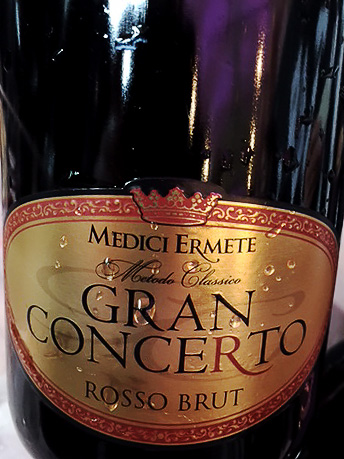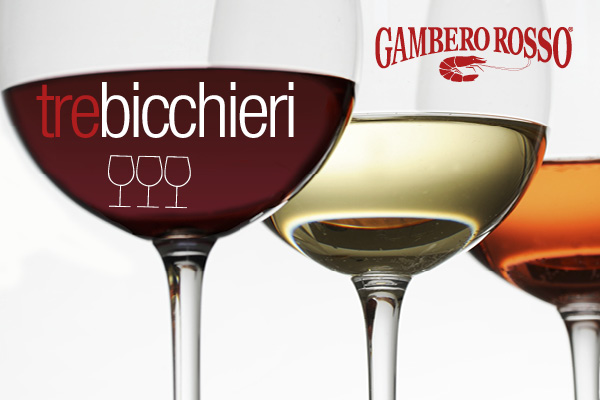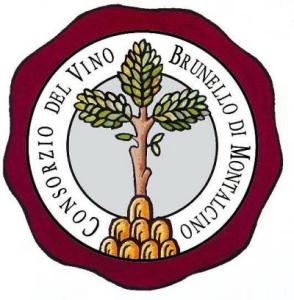
With some delay, I finally got to sit down and write my report about the Gambero Rosso Tre Bicchieri 2013 Italian wine fair that took place in New York City on February 15.
As was the case for the Vinitaly/Slow Wine NYC 2013 event, I have attended the Tre Bicchieri event with fellow wine blogger and friend Anatoli who authors the excellent Talk-A-Vino wine blog, a blog that you should definitely follow if you don’t already and are into wine. Doing the walk around with Anatoli was as usual a lot of fun and very helpful and stimulating in terms of sharing views and comparing notes about the wines we tried out. Anatoli has tons of knowledge about wine and is a pleasure to talk to and learn from. You can (and in my view you should) read Anatoli’s take of the Tre Bicchieri NYC event on his blog, where he published an excellent and very thorough post about it, complete with pictures of the fair!
Regarding the logistics of the event, the check in process was smooth and quick, thanks to the mandatory online pre-registration. The premises where the event took place (the Metropolitan Pavillion in Chelsea, NYC) were perfectly adequate for the fair which, with over 170 producers showcasing their wines, was a pretty big one. While it was helpful that the organizers provided everyone with a booklet with the names of each producer and exhibited wine and a progressive number for each, the layout of the event was unfortunately quite messy.
The wineries were not organized on a region-by-region basis, as would seem to make the most sense. Rather, they were organized by importer, which in my view is not helpful as importers may (and most of the time do) represent several different producers from completely different regions and with different styles. To make things worse, the physical layout of the tasting tables was such that, even by following the numerical progression of the booklet, from 1 to 173, whenever a row ended, it proved very difficult to understand where the next table number would be, which made our navigation of the event quite frustrating. The logistics of the Slow Wine part of the Vinitaly/Slow Wine NYC 2013 event were vastly preferable.
But let’s now get down the actual wine tasting experience. As was the case for the Vinitaly/Slow Wine NYC 2013 event, I will list below what in my view was the absolute top of the crop among the many great wines that I got to taste and, in an effort not to drive you insane, I will group them by region contrary to what the organizers did! 😉 It goes without saying that the list below is far from being complete, because (i) clearly we did not get to try out all of the 173 wines on display; (ii) certain of the wines that Anatoli and I were targeting were no longer available by the time we got to the relevant tasting table; and (iii) I made an effort to be extremely selective in my choices below in order to keep this post to a manageable length, so by all means there were many more very good wines that I tasted but did not “make the cut” to be mentioned on this post.
1. ALTO ADIGE
– Abbazia di Novacella, Alto Adige Valle Isarco Sylvaner “Praepositus” 2011: an elegant bouquet of pear, apple, peach and citrus graces this pleasant and tasty medium-bodied white: Very Good 
2. TRENTINO
– Ferrari, Trento Extra Brut Perle’ Nero 2006: this fabulous, creamy Classic Method Blanc de Noirs is 100% Pinot Noir, ages 72 months on its lees and displays complex aromas of red berries, pineapple, citrus, toast and hazelnut: Outstanding 
– Ferrari, Trento Brut “Giulio Ferrari Riserva del Fondatore” 2002: just the opposite of the previous one, this phenomenal Classic Method Blanc de Blancs is 100% Chardonnay, ages 10 years (!) on its lees and blesses the taster with complex aromas of butter, vanilla, toast, citrus, apple, pineapple… WOW: Spectacular  (the only problem is its astronomical price tag!)
(the only problem is its astronomical price tag!)
3. FRIULI
– La Tunella, Colli Orientali del Friuli Ribolla Gialla “RJgialla” 2011: a wonderful, super-pleasant, fresh medium-bodied white made of 100% Ribolla Gialla (a grape variety indigenous to Friuli) with an elegant bouquet of apple, Mirabelle plum, peach and white flowers: Outstanding 
– Livon, Collio Friulano “Manditocai” 2010: a solid 100% Friulano (AKA Tocai) white wine with nice aromas of butter, tropical fruit, citrus and minerals: Very Good 
4. PIEMONTE
– Chiarlo, Barbera d’Asti Superiore “Nizza La Court” 2009: a very good, smooth Barbera with aromas of raspberry, spirited cherry and rose: Very Good 
– Elvio Cogno, Barolo “Vigna Elena” Riserva 2006: an excellent Barolo with a complex bouquet of violet, cherry, raspberry and licorice: Very Good  but will benefit from a few extra years of aging to finish taming its tannic strength
but will benefit from a few extra years of aging to finish taming its tannic strength
– Le Piane, Boca 2008: a great 85% Nebbiolo, 15% Vespolina full-bodied red, smooth and yet with tannic strength, offering complex aromas of berries, plum, violet, black pepper and minerals: Very Good 
– Baudana/Vajra, Barolo “Baudana” 2004: OMG, this was a fabulous treat “off the list”, that the very kind representative of the producer treated Anatoli and me to – it was the typical example of the reason why you want to buy a good Barolo and then forget about it for many years and eventually enjoy it in all its divine expressiveness: a complex nose of cherry, plum, blackberry and coffee complements supple tannins and plenty of structure: Spectacular 
– Baudana/Vajra, Barolo “Cerretta” 2008: this younger vintage from a different “clos” presented a relatively subdued nose of licorice, leather and black pepper, while in the mouth it was smooth and had already fairly gentle tannins: Very Good  but will need more years of aging to be at its top
but will need more years of aging to be at its top
5. LOMBARDIA
– Berlucchi, Franciacorta “Cellarius” Brut 2008: with 80% Chardonnay, 20% Pinot Noir and 30 months of aging on its lees, this Classic Method sparkler is one of my favorite Franciacorta’s for its QPR, although I have to say the 2008 vintage appears more constrained compared to the excellent 2006 and 2007, but still plenty good – the only problem is that for some reason this wine is not imported in the US yet, but I will give you a tip: if you happen to travel to the US from the Milan Malpensa airport, you can buy the Cellarius in the duty free zone right after clearing the security check area: definitely worth a stop if you ask me! – Anyway, the Cellarius has elegant aromas of citrus, apple, bread crust and minerals, a lively acidity and a fine and long-lasting perlage: Very Good 
– Ca’ del Bosco, Franciacorta Extra Brut Rose’ Cuvee “Annamaria Clementi” 2004: WOW, if at the Vinitaly/Slow Wine NYC 2013 event Anatoli and I had already enjoyed (and let me add fallen in love with) the fabulous white version of this top of the line Classic Method sparkling wine label of the Ca’ del Bosco winery (which in Italy retails at about €80 a pop), the Tre Bicchieri event gave us the opportunity to also taste the Rose’ version of it, which moves up the price tag of this phenomenal sparkler to a whopping €140 a bottle! With 100% Pinot Noir and 7 years on its lees, this wonderful wine exhibits a complex bouquet of pastry, hazelnuts, chocolate, coffee and minerals complemented by a fresh, tasty and structured mouth feel: Spectacular 
– Mamete Prevostini, Valtellina Superiore Riserva 2009: there is very good value in this 100% Chiavennasca (AKA Nebbiolo) red, with a nice nose of cherry, raspberry, coffee and cocoa, as well as already gentle tannins: Very Good 
6. VENETO
–Masi, Amarone della Valpolicella Classico “Mazzano” 2006: definitely not an inexpensive Amarone, but in my view Masi never lets down with an excellent top of the line label with a complex bouquet of black cherry, blackberry, vanilla, leather, licorice and chocolate as well as plenty of structure and warmth in the mouth and noticeable but supple tannins: Outstanding 
– Viticoltori Speri, Amarone della Valpolicella Classico “Vigneto Monte Sant’Urbano” 2008: a very good Amarone with a decent QPR and subtle aromas of wild berries, soil and coffee; in the mouth, plenty of structure coupled with gentle but noticeable tannins and a long finish: Very Good 
7. LIGURIA
– Cantine Lunae, Colli di Luni Vermentino “Cavagino” 2011: a very good Vermentino that is partly fermented in barrique casks and has pleasant aromas of apricot, peach, hazelnut and mint: Outstanding 
8. TOSCANA
– Poggio di Sotto, Brunello di Montalcino 2007: a wonderful Brunello with a hefty price tag, but an elegant bouquet of red berries, plum, herbs, soil and licorice, for a wine that feels warm and with noticeable but already gentle tannins in the mouth: Spectacular 
– Tenuta dell’Ornellaia, Bolgheri Superiore Ornellaia 2009: a typical Bordeaux-style blend for this vintage of one of the archetypical Super Tuscans, with 52% Cabernet Sauvignon, 22% Merlot, 21% Cabernet Franc and 5% Petit Verdot – in spite of its elegant nose of wild berries, herbs, black pepper and minerals, I think opening a bottle of so fantastic a wine so early in its life is almost a sin, as it is somewhat like driving a Ferrari only in first gear… The tannins are still young and need time to harmoniously integrate: should you spend the small fortune necessary to buy a bottle of this great wine, store it properly in your cellar and leave it there for several years before drinking it, it will pay you back big time: Outstanding 
9. MARCHE
– Fazi Battaglia, Verdicchio dei Castelli di Jesi Classico “San Sisto” Riserva 2009: an excellent Verdicchio with a complex bouquet of citrus, peach, pineapple, almond and minerals, smooth and tasty in the mouth and with a long finish: Outstanding 
10. UMBRIA
– Castello della Sala, “Cervaro della Sala” 2010: a blend of 90% Chardonnay and 10% Grechetto aged in barrique casks for 6 months for this excellent, smooth wine with fine aromas of citrus, pineapple, butter, honey and hazelnut: Outstanding 
– Tabarrini, Sagrantino di Montefalco “Campo alla Cerqua” 2008: a wonderful Sagrantino with fine aromas of rose, violet, plum, soil, licorice and black pepper, which in the mouth is full-bodied, warm and with noticeable but supple tannins: Outstanding 
11. ABRUZZO
– Torre dei Beati, Montepulciano d’Abruzzo “Cocciapazza” 2009: an excellent Montepulciano with aromas of cherry, wild berries, chocolate and licorice, which in the mouth is warm and has substantial but smooth tannins and plenty of structure: Very Good 
12. CAMPANIA
– Marisa Cuomo, Costa d’Amalfi Furore Bianco Fiorduva 2010: well, I think I have said enough about the Fiorduva in my recent wine review – with a fine bouquet of peach, apricot and Mirabelle plum, it is balanced and has a long finish, although it would benefit from one or two more years of aging before enjoying it: Outstanding 
– Mastroberardino, Taurasi “Radici” 2008: a great 100% Aglianico wine with an excellent QPR and fine aromas of blackberry, blueberry, soil and black pepper; it is warm in the mouth and has abundant yet gentle tannins: Outstanding 
13. BASILICATA
– Basilisco, Aglianico del Vulture “Basilisco” 2009: a fantastic Aglianico del Vulture with a fine bouquet of cherry, herbs, soil, minerals and oaky notes, along with noticeable but gentle tannins in a full-bodied structure: Outstanding 
14. SICILIA
– Cusumano, “Noa'” 2010: a blend of 40% Nero d’Avola, 30% Cabernet Sauvignon and 30% Merlot for an immediately enjoyable wine with aromas of rose, blackberry, black cherry, blueberry, graphite and cocoa, good structure and supple tannins: Very Good 
– Donnafugata, Contessa Entellina Rosso “Mille e Una Notte” 2008: a wonderful blend of 80% Nero d’Avola, 20% Cabernet Sauvignon, Merlot and Syrah that results in an inky wine with a fine nose of plum, spirited cherry, sweet tobacco and vanilla, plenty of structure and gentle tannins: Very Good 
– Donnafugata, Passito di Pantelleria “Ben Rye'” 2010: WOW, this 100% Zibibbo (AKA Moscato d’Alessandria) gem is one of my favorite dessert wines (I plan to post a full review of it later this year), always dependable and seducing, with a bouquet that goes beyond your wildest dreams with aromas of dried apricot, honey, herbs and saffron, plenty of acidity and tastiness to counter its sweetness in an enviable balance that will keep you sipping and sipping and sipping…: Spectacular 
– Firriato, “Ribeca” 2010: a solid 100% Perricone (an indigenous black-berried variety) full-bodied red wine with fine aromas of cherries, red berries, herbs, soil and chocolate, as well as gentle tannins: Very Good 
– Graci, Etna Bianco “Quota 600” 2010: a fine 70% Carricante, 30% Catarratto volcanic white wine with a pleasant bouquet of apricot, herbs and minerals complementing a fresh, smooth and tasty mouth feel: Very Good 
15. SARDEGNA
– Cantina di Santadi, Carignano del Sulcis “Rocca Rubia” Riserva 2009: a fine 100% Carignano red wine with interesting aromas of raspberry, cocoa, graphite and fur that is warm, mineral and tannic in the mouth: Very Good 
 Ermete Medici, “Gran Concerto” Rosso Brut 2011 ($N/A/€12): an extremely interesting Classic Method sparkling Lambrusco Salamino which matured for 30 months on its lees and was disgorged in 2014. The nose is immediately catchy with aromas of wild strawberries, raspberries, violets and fresh toast. The mouthfeel is refreshing and pleasant, smooth with…
Ermete Medici, “Gran Concerto” Rosso Brut 2011 ($N/A/€12): an extremely interesting Classic Method sparkling Lambrusco Salamino which matured for 30 months on its lees and was disgorged in 2014. The nose is immediately catchy with aromas of wild strawberries, raspberries, violets and fresh toast. The mouthfeel is refreshing and pleasant, smooth with…
 Ferrari, Trento Perlé Brut…
Ferrari, Trento Perlé Brut…








 In terms of winemaking, the Chianti Classico DOCG regulations require that wines be made from 80% or more
In terms of winemaking, the Chianti Classico DOCG regulations require that wines be made from 80% or more  Chianti DOCG regulations require instead that wines be made from 70% or more
Chianti DOCG regulations require instead that wines be made from 70% or more 












 Last week I felt inspired by reading Anatoli’s wonderful accounts of his
Last week I felt inspired by reading Anatoli’s wonderful accounts of his 
 During a recent trip to Milan, I participated in a pretty exciting (well, at least if you are into Italian wine!) event organized by the Milan chapter of the Italian Sommelier Association: a
During a recent trip to Milan, I participated in a pretty exciting (well, at least if you are into Italian wine!) event organized by the Milan chapter of the Italian Sommelier Association: a 



